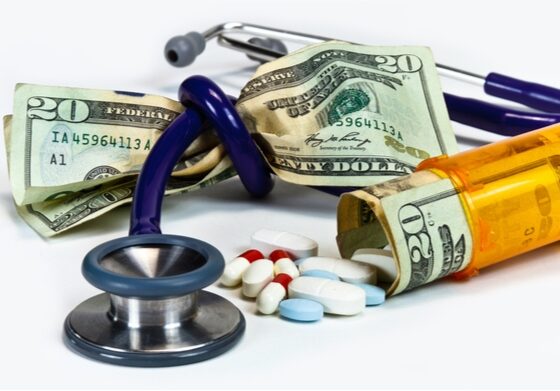The fragmented health care market in the United States has driven up costs, putting deep economic strains on consumers and the country. The Affordable Care Act promises to help Americans become insured and obtain access to the system. What about reducing health care cost? Reducing the cost of care has been more elusive. In the mean time consumers need to find trusted partners to reduce medical bills.
Colonoscopies Explain Why U.S. Leads the World in Health Expenditures
By ELISABETH ROSENTHAL, NY Times
Deirdre Yapalater’s recent colonoscopy at a surgical center near her home here on Long Island went smoothly: she was whisked from pre-op to an operating room where a gastroenterologist, assisted by an anesthesiologist and a nurse, performed the routine cancer screening procedure in less than an hour. The test, which found nothing worrisome, racked up what is likely her most expensive medical bill of the year: $6,385. That is fairly typical: in Keene, N.H., Matt Meyer’s colonoscopy was billed at $7,563.56. Maggie Christ of Chappaqua, N.Y., received $9,142.84 in bills for the procedure. In Durham, N.C., the charges for Curtiss Devereux came to $19,438, which included a polyp removal. While their insurers negotiated down the price, the final tab for each test was more than $3,500. “Could that be right?” said Ms. Yapalater, stunned by charges on the statement on her dining room table. Although her insurer covered the procedure and she paid nothing, her health care costs still bite: Her premium payments jumped 10 percent last year, and rising co-payments and deductibles are straining the finances of her middle-class family, with its mission-style house in the suburbs and two S.U.V.’s parked outside. “You keep thinking it’s free,” she said. “We call it free, but of course it’s not.”
In many other developed countries, a basic colonoscopy costs just a few hundred dollars and certainly well under $1,000. That chasm in price helps explain why the United States is far and away the world leader in medical spending, even though numerous studies have concluded that Americans do not get better care. Whether directly from their wallets or through insurance policies, Americans pay more for almost every interaction with the medical system. They are typically prescribed more expensive procedures and tests than people in other countries, no matter if those nations operate a private or national health system. A list of drug, scan and procedure prices compiled by the International Federation of Health Plans, a global network of health insurers, found that the United States came out the most costly in all 21 categories — and often by a huge margin.
Americans pay, on average, about four times as much for a hip replacement as patients in Switzerland or France and more than three times as much for a Caesarean section as those in New Zealand or Britain. The average price for Nasonex, a common nasal spray for allergies, is $108 in the United States compared with $21 in Spain. The costs of hospital stays here are about triple those in other developed countries, even though they last no longer, according to a recent report by the Commonwealth Fund, a foundation that studies health policy.
While the United States medical system is famous for drugs costing hundreds of thousands of dollars and heroic care at the end of life, it turns out that a more significant factor in the nation’s $2.7 trillion annual health care bill may not be the use of extraordinary services, but the high price tag of ordinary ones. “The U.S. just pays providers of health care much more for everything,” said Tom Sackville, chief executive of the health plans federation and a former British health minister.
Colonoscopies offer a compelling case study. They are the most expensive screening test that healthy Americans routinely undergo — and often cost more than childbirth or an appendectomy in most other developed countries. Their numbers have increased manyfold over the last 15 years, with data from the Centers for Disease Control and Prevention suggesting that more than 10 million people get them each year, adding up to more than $10 billion in annual costs. Largely an office procedure when widespread screening was first recommended, colonoscopies have moved into surgery centers — which were created as a step down from costly hospital care but are now often a lucrative step up from doctors’ examining rooms — where they are billed like a quasi operation. They are often prescribed and performed more frequently than medical guidelines recommend.
The high price paid for colonoscopies mostly results not from top-notch patient care, according to interviews with health care experts and economists, but from business plans seeking to maximize revenue; haggling between hospitals and insurers that have no relation to the actual costs of performing the procedure; and lobbying, marketing and turf battles among specialists that increase patient fees.
While several cheaper and less invasive tests to screen for colon cancer are recommended as equally effective by the federal government’s expert panel on preventive care — and are commonly used in other countries — colonoscopy has become the go-to procedure in the United States. “We’ve defaulted to by far the most expensive option, without much if any data to support it,” said Dr. H. Gilbert Welch, a professor of medicine at the Dartmouth Institute for Health Policy and Clinical Practice.
In coming months, The New York Times will look at common procedures, drugs and medical encounters to examine how the economic incentives underlying the fragmented health care market in the United States have driven up costs, putting deep economic strains on consumers and the country. Hospitals, drug companies, device makers, physicians and other providers can benefit by charging inflated prices, favoring the most costly treatment options and curbing competition that could give patients more, and cheaper, choices. And almost every interaction can be an opportunity to send multiple, often opaque bills with long lists of charges: $100 for the ice pack applied for 10 minutes after a physical therapy session, or $30,000 for the artificial joint implanted in surgery.
The United States spends about 18 percent of its gross domestic product on health care, nearly twice as much as most other developed countries. The Congressional Budget Office has said that if medical costs continue to grow unabated, “total spending on health care would eventually account for all of the country’s economic output.” And it identified federal spending on government health programs as a primary cause of long-term budget deficits.
While the rise in health care spending in the United States has slowed in the past four years — to about 4 percent annually from about 8 percent — it is still expected to rise faster than the gross domestic product. Aging baby boomers and tens of millions of patients newly insured under the Affordable Care Act are likely to add to the burden.
With health insurance premiums eating up ever more of her flat paycheck, Ms. Yapalater, a customer relations specialist for a small Long Island company, recently decided to forgo physical therapy for an injury sustained during Hurricane Sandy because of high out-of-pocket expenses. She refused a dermatology medication prescribed for her daughter when the pharmacist said the co-payment was $130. “I said, ‘That’s impossible, I have insurance,’ ” Ms. Yapalater recalled. “I called the dermatologist and asked for something cheaper, even if it’s not as good.” The more than $35,000 annually that Ms. Yapalater and her employer collectively pay in premiums — her share is $15,000 — for her family’s Oxford Freedom Plan would be more than sufficient to cover their medical needs in most other countries. She and her husband, Jeff, 63, a sales and marketing consultant, have three children in their 20s with good jobs. Everyone in the family exercises, and none has had a serious illness.
Like the Yapalaters, many other Americans have habits or traits that arguably could put the nation at the low end of the medical cost spectrum. Patients in the United States make fewer doctors’ visits and have fewer hospital stays than citizens of many other developed countries, according to the Commonwealth Fund report. People in Japan get more CT scans. People in Germany, Switzerland and Britain have more frequent hip replacements. The American population is younger and has fewer smokers than those in most other developed countries. Pushing costs in the other direction, though, is that the United States has relatively high rates of obesity and limited access to routine care for the poor.
A major factor behind the high costs is that the United States, unique among industrialized nations, does not generally regulate or intervene in medical pricing, aside from setting payment rates for Medicare and Medicaid, the government programs for older people and the poor. Many other countries deliver health care on a private fee-for-service basis, as does much of the American health care system, but they set rates as if health care were a public utility or negotiate fees with providers and insurers nationwide, for example.
“In the U.S., we like to consider health care a free market,” said Dr. David Blumenthal, president of the Commonwealth Fund and a former adviser to President Obama. ”But it is a very weird market, riddled with market failures.”
Consider this:
Consumers, the patients, do not see prices until after a service is provided, if they see them at all. And there is little quality data on hospitals and doctors to help determine good value, aside from surveys conducted by popular Web sites and magazines. Patients with insurance pay a tiny fraction of the bill, providing scant disincentive for spending.
Even doctors often do not know the costs of the tests and procedures they prescribe. When Dr. Michael Collins, an internist in East Hartford, Conn., called the hospital that he is affiliated with to price lab tests and a colonoscopy, he could not get an answer. “It’s impossible for me to think about cost,” he said. “If you go to the supermarket and there are no prices, how can you make intelligent decisions?”
Instead, payments are often determined in countless negotiations between a doctor, hospital or pharmacy, and an insurer, with the result often depending on their relative negotiating power. Insurers have limited incentive to bargain forcefully, since they can raise premiums to cover costs.
“It all comes down to market share, and very rarely is anyone looking out for the patient,” said Dr. Jeffrey Rice, the chief executive of Healthcare Blue Book, which tracks commercial insurance payments. “People think it’s like other purchases: that if you pay more you get a better car. But in medicine, it’s not like that.”
You might also like


